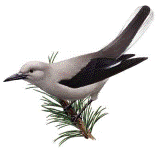Papers in the Biological Sciences
Document Type
Article
Date of this Version
2007
Abstract
In serial reversal learning, subjects learn to respond differentially to 2 stimuli. When the task is fully acquired, reward contingencies are reversed, requiring the subject to relearn the altered associations. This alternation of acquisition and reversal can be repeated many times, and the ability of a species to adapt to this regimen has been considered as an indication of behavioral flexibility. Serial reversal learning of 2-choice discriminations was contrasted in 3 related species of North American corvids: pinyon jays (Gymnorhinus cyanocephalus), which are highly social; Clark’s nutcrackers (Nucifraga columbiana), which are relatively solitary but specialized for spatial memory; and western scrub jays (Aphelocoma californica), which are ecological generalists. Pinyon jays displayed significantly lower error rates than did nutcrackers or scrub jays after reversal of reward contingencies for both spatial and color stimuli. The effect was most apparent in the 1st session following each reversal and did not reflect species differences in the rate of initial discrimination learning. All 3 species improved their performance over successive reversals and showed significant transfer between color and spatial tasks, suggesting a generalized learning strategy. The results are consistent with an evolutionary association between behavioral flexibility and social complexity.




Comments
Published in Journal of Comparative Psychology 121:4 (2007), pp. 372–379; doi: 10.1037/0735-7036.121.4.372 Copyright © 2007 American Psychological Association. Used by permission. “This article may not exactly replicate the final version published in the APA journal. It is not the copy of record.” http://www.apa.org/journals/com/